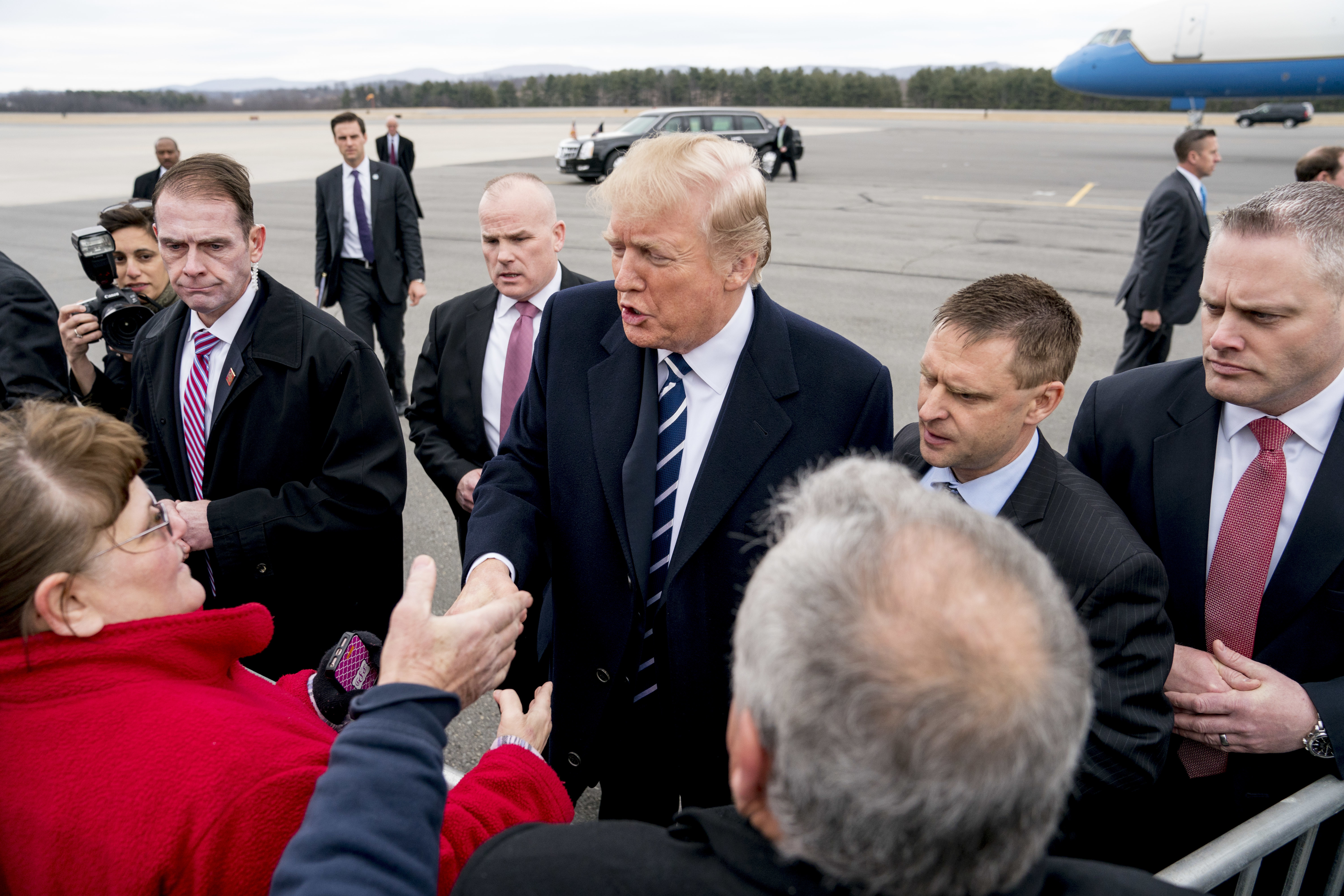
The Trump administration has announced it will continue much of the Obama administration’s nuclear weapons policy, but take a more aggressive stance toward Russia.
It said Russia must be persuaded it would face “unacceptably dire costs” if it were to threaten even limited nuclear attack in Europe.
The sweeping review of US nuclear policy does not call for any net increase in strategic nuclear weapons, a position that stands in contrast to President Donald Trump’s statement, in a tweet shortly before he took office, that the US “must greatly strengthen and expand its nuclear capability until such time as the world comes to its senses regarding nukes”.
In his State of the Union address on Tuesday, he made no mention of expansion, though he said the arsenal must deter acts of aggression.
A 74-page report summarising the review’s findings calls North Korea a “clear and grave threat” to the US and its allies. It asserts that any North Korean nuclear attack against the US or its allies will result in “the end of that regime”.
“There is no scenario in which the Kim regime could employ nuclear weapons and survive,” it says.

The Pentagon-led review of the US nuclear arsenal and the policies that govern it was ordered by Mr Trump a year ago. Known officially as a nuclear posture review, it is customarily done at the outset of a new administration.
The Trump administration concluded that the US should largely follow its predecessor’s blueprint for modernising the nuclear arsenal, including new bomber aircraft, submarines and land-based missiles.
It also endorsed adhering to existing arms control agreements, including the New Start treaty that limits the United States and Russia each to 1,550 strategic nuclear warheads on a maximum of 700 deployed launchers.
The treaty, negotiated under President Barack Obama, entered into force on February 5 2011, and its weapons limits must be met by Monday.
“Moscow has repeatedly stated its intention to meet those limits on time, and we have no reason to believe that that won’t be the case,” State Department spokeswoman Heather Nauert said Thursday.
The Pentagon’s nuclear review concluded that while arms control can advance American interests, “further progress is difficult to envision”, in light of what the US considers Russia’s aggression in Ukraine and violations of existing arms deals.
The Trump nuclear doctrine breaks with Mr Obama’s in ending his push to reduce the role of nuclear weapons in US defence policy.
Like Mr Obama, Mr Trump would consider using nuclear weapons only in “extreme circumstances,” while maintaining a degree of ambiguity about what that means. But Mr Trump sees a fuller deterrent role for these weapons, as reflected in the plan to develop new capabilities to counter Russia in Europe.
The administration’s view is that Russian policies and actions are fraught with potential for miscalculation leading to an uncontrolled escalation of conflict in Europe. It specifically points to a Russian doctrine known as “escalate to de-escalate”, in which Moscow would use or threaten to use smaller-yield nuclear weapons in a limited, conventional conflict in Europe in the belief that doing so would compel the US and Nato to back down.
“Recent Russian statements on this evolving nuclear weapons doctrine appear to lower the threshold for Moscow’s first-use of nuclear weapons,” the review said.


Comments: Our rules
We want our comments to be a lively and valuable part of our community - a place where readers can debate and engage with the most important local issues. The ability to comment on our stories is a privilege, not a right, however, and that privilege may be withdrawn if it is abused or misused.
Please report any comments that break our rules.
Read the rules here